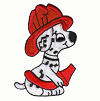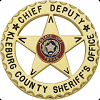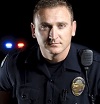Emergency services have a long, rich history dating back to ancient times. With such an extensive past, it's inevitable that the meaning of some commonly-used symbols would be unknown to many working in the field. Here is a brief summary of the most common emergency services symbols and their meanings:
 Maltese Cross: The maltese cross is an eight-point symbol which originated during the Crusades. When fire was used against the Knights of St. John in a battle on the island of Malta, they banded together to fight the flames and rescue the injured. They were later said to be awarded a badge of honor similar to the maltese cross. The eight points of the four arms symbolize the eight obligations of the knights: (1) to live in truth, (2) to have faith, (3) to repent one's sins, (4) to give proof of humility, (5) to love justice, (6) to be merciful, (7) to be sincere and wholehearted, (8) to endure persecution. It has come to symbolize the bravery and selflessness of those who fight fire.
Maltese Cross: The maltese cross is an eight-point symbol which originated during the Crusades. When fire was used against the Knights of St. John in a battle on the island of Malta, they banded together to fight the flames and rescue the injured. They were later said to be awarded a badge of honor similar to the maltese cross. The eight points of the four arms symbolize the eight obligations of the knights: (1) to live in truth, (2) to have faith, (3) to repent one's sins, (4) to give proof of humility, (5) to love justice, (6) to be merciful, (7) to be sincere and wholehearted, (8) to endure persecution. It has come to symbolize the bravery and selflessness of those who fight fire.
 Star of Life: The star of life symbol is a blue, six-pointed star that features a snake and staff (the Rod of Asclepius) and a white border. The six sides of the star represent the six main tasks of emergency responders: (1) detection, (2) reporting, (3) response, (4) on-scene care, (5) care in transit, (6) transfer to definitive care. The snake and staff represent the Ancient Greek symbol for healing.
Star of Life: The star of life symbol is a blue, six-pointed star that features a snake and staff (the Rod of Asclepius) and a white border. The six sides of the star represent the six main tasks of emergency responders: (1) detection, (2) reporting, (3) response, (4) on-scene care, (5) care in transit, (6) transfer to definitive care. The snake and staff represent the Ancient Greek symbol for healing.
 Red Cross: The symbol of the red cross on a white background was declared as the protection symbol at the Geneva Convention in 1864. It was introduced because a universal symbol was needed that could be easily recognized by injured soldiers on the battlefield. Swiss surgeon Dr. Louis Appia and Swiss General Henri Dufour together came up with the design which is still one of the most recognizable symbols of all time.
Red Cross: The symbol of the red cross on a white background was declared as the protection symbol at the Geneva Convention in 1864. It was introduced because a universal symbol was needed that could be easily recognized by injured soldiers on the battlefield. Swiss surgeon Dr. Louis Appia and Swiss General Henri Dufour together came up with the design which is still one of the most recognizable symbols of all time.
 Eagle: Eagles are commonly used on U.S official seals, badges, and other American insignia. The bald eagle is a symbol of freedom, as represented by its ability to soar above all creatures. This species of eagle isn't actually bald, as they have white feathers on their heads. White symbolizes truth and justice.
Eagle: Eagles are commonly used on U.S official seals, badges, and other American insignia. The bald eagle is a symbol of freedom, as represented by its ability to soar above all creatures. This species of eagle isn't actually bald, as they have white feathers on their heads. White symbolizes truth and justice.
 Fire scramble: A fire scramble is a traditional fire fighting symbol that depicts a grouping of fire symbols. The elements of the scramble can vary from department to department, but typically contain a ladder and an axe. Some contain more modern tools of the trade, such as a helmet or a fire hydrant; while others contain more traditional tools such as a pike pole. Together, all of the elements symbolize preparedness.
Fire scramble: A fire scramble is a traditional fire fighting symbol that depicts a grouping of fire symbols. The elements of the scramble can vary from department to department, but typically contain a ladder and an axe. Some contain more modern tools of the trade, such as a helmet or a fire hydrant; while others contain more traditional tools such as a pike pole. Together, all of the elements symbolize preparedness.
 Shield: The first badges were the coat of arms worn by knights on their shields. The coat of arms identified the knight's allegiance to his royal leaders, as well as to chivalry and justice. Today, police officers often continue this tradition by wearing shield badges to symbolize their dedication to protect the people and keep the peace.
Shield: The first badges were the coat of arms worn by knights on their shields. The coat of arms identified the knight's allegiance to his royal leaders, as well as to chivalry and justice. Today, police officers often continue this tradition by wearing shield badges to symbolize their dedication to protect the people and keep the peace.
 Dalmatian: In the late 19th Century, horse-drawn fire engines were the most common tool of the trade among fire fighters. Dalmatians were known to form close bonds with horses and were fast enough to run alongside them for long distances. Because of this, fire fighters began employing dalmatians to keep the horses from getting spooked on the way to fires. They were also used to guard equipment. Today, they are merely a mascot for most fire departments.
Dalmatian: In the late 19th Century, horse-drawn fire engines were the most common tool of the trade among fire fighters. Dalmatians were known to form close bonds with horses and were fast enough to run alongside them for long distances. Because of this, fire fighters began employing dalmatians to keep the horses from getting spooked on the way to fires. They were also used to guard equipment. Today, they are merely a mascot for most fire departments.
 Scales: Scales symbolize justice. Each scale represents the opposing sides to a case which need to be balanced out before a decision is made. The scales also symbolize fairness, reason and strength.
Scales: Scales symbolize justice. Each scale represents the opposing sides to a case which need to be balanced out before a decision is made. The scales also symbolize fairness, reason and strength.
 Sheriff star: In the late 19th Century, Texas Rangers struggled to establish authority. It was decided that they would create their own badges so they could easily identify themselves to the growing number of people on the frontier. The easiest way to do this was to punch out five triangles from the 5 Peso Mexican coins that were readily available, making the shape of a star inside a circle. The 5-point star is said to symbolize the state of Texas as a “lone star.”
Sheriff star: In the late 19th Century, Texas Rangers struggled to establish authority. It was decided that they would create their own badges so they could easily identify themselves to the growing number of people on the frontier. The easiest way to do this was to punch out five triangles from the 5 Peso Mexican coins that were readily available, making the shape of a star inside a circle. The 5-point star is said to symbolize the state of Texas as a “lone star.”
![]() Chevron: During the Middle Ages, Knights carried shields with chevrons on them to indicate their rank. The chevron symbolizes protection, most likely because when the point faces up, the shape resembles a roof.
Chevron: During the Middle Ages, Knights carried shields with chevrons on them to indicate their rank. The chevron symbolizes protection, most likely because when the point faces up, the shape resembles a roof.
 Bugle: Before wireless radios, fire fighters had to give orders at the scene of a fire using a brass megaphone known as a bugle. Today, bugles are no longer used, but are a big part of fire fighter insignia, symbolizing leadership. The more bugles on the insignia, the higher the rank.
Bugle: Before wireless radios, fire fighters had to give orders at the scene of a fire using a brass megaphone known as a bugle. Today, bugles are no longer used, but are a big part of fire fighter insignia, symbolizing leadership. The more bugles on the insignia, the higher the rank.
 Caduceus: It is thought that at some point at the end of the 19th Century, the caduceus were mistaken for the Rod of Asclepius (the Greek symbol for medicine) because of their similarity (the Rod of Asclepius has one snake wrapped around a staff, while the caduceus have two snakes wrapped around a staff and wings at the top). The caduceus symbolize trade, eloquence and negotiation. Despite their different meanings, over time, both have come to be recognized as symbols of medicine.
Caduceus: It is thought that at some point at the end of the 19th Century, the caduceus were mistaken for the Rod of Asclepius (the Greek symbol for medicine) because of their similarity (the Rod of Asclepius has one snake wrapped around a staff, while the caduceus have two snakes wrapped around a staff and wings at the top). The caduceus symbolize trade, eloquence and negotiation. Despite their different meanings, over time, both have come to be recognized as symbols of medicine.
 Thin Blue Line: The thin blue line is used to commemorate fallen police officers. The blue line itself represents police officers, whereas the bottom black line represents criminals and the top black line, the public. The thin blue line (police) come between the public and criminals, thereby protecting them. As the popularity of this symbol grew, others became commonly used, including the thin red line for fire fighters, the thin white line for EMS', and many more.
Thin Blue Line: The thin blue line is used to commemorate fallen police officers. The blue line itself represents police officers, whereas the bottom black line represents criminals and the top black line, the public. The thin blue line (police) come between the public and criminals, thereby protecting them. As the popularity of this symbol grew, others became commonly used, including the thin red line for fire fighters, the thin white line for EMS', and many more.
 Olive branch: The olive branch has long been used as a symbol of peace. Greek mythology, early Christian imagery, Arab folk traditions and Ancient Rome all used the image of the olive branch. Today, they are often found on emergency services insignia to symbolize peace.
Olive branch: The olive branch has long been used as a symbol of peace. Greek mythology, early Christian imagery, Arab folk traditions and Ancient Rome all used the image of the olive branch. Today, they are often found on emergency services insignia to symbolize peace.
 Left Chest: Emergency service workers often wear their badges on the left chest of their uniforms. This is thought to be an homage to the knights who carried their shield in their left hand to protect the heart while bravely fighting to protect the public. It is also a reminder of the oath taken to serve the community with honour and bravery.
Left Chest: Emergency service workers often wear their badges on the left chest of their uniforms. This is thought to be an homage to the knights who carried their shield in their left hand to protect the heart while bravely fighting to protect the public. It is also a reminder of the oath taken to serve the community with honour and bravery.
